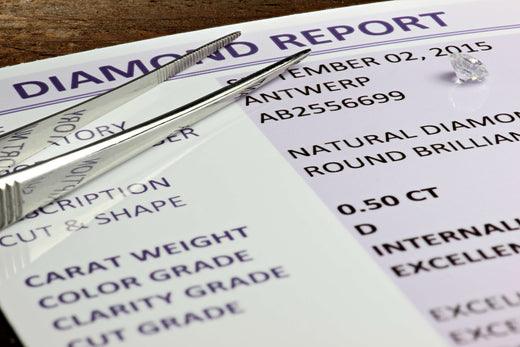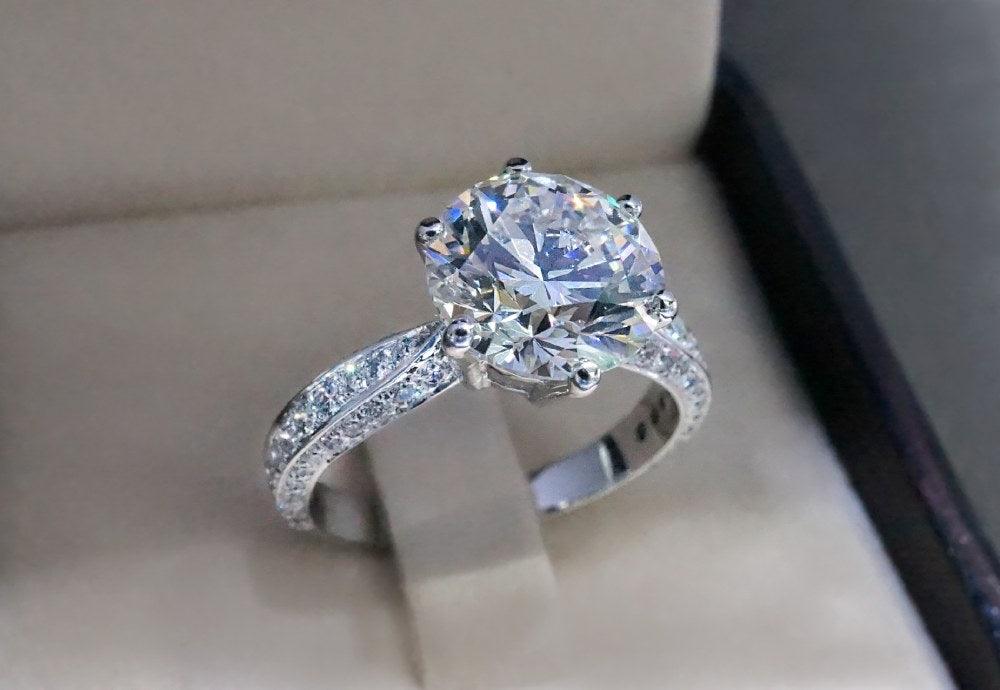
Anatomy of an Engagement Ring
A proposal can be one of the most exciting moments of your life, no matter what side of the knee you are on. It can also be a nerve-wracking experience, no matter what side of the knee you are on. Those feelings certainly extend to choosing the engagement ring. Whether you are choosing it for your loved one, or for your loved one to give to you, designing and/or deciding on a ring can be tricky business.
That’s why we at Michael Gabriels developed our Engagement Ring Basics series. This one features the basics of a diamond engagement ring’s anatomy.
We will discuss:
- What the parts of an engagement ring are, including,
- The parts of the setting,
- The parts of the band or shank,
- Accents that are commonly used in engagement rings.
With this information, you should be able to understand the elements that go into ring design.
What are the parts of an engagement ring?
The anatomy of an engagement ring can differ noticeably from wedding bands or other fine jewelry. Engagement rings feature two main sections: the setting which holds the diamond and the band which wraps around the finger.
The setting consists of the head, where the center stone or stones are placed but can have many other parts and additional stones, or tiny diamonds called melee or pave.
The band of the ring is referred to as the ring shank or just shank, normally of precious metal, which itself can be simple or contain intricate design details, depending on the style of the ring and the setting.
Note: There is some variation in how the following terms are used throughout the jewelry industry. This article represents how we at Michael Gabriels use these terms.

Design Features of the Engagement Ring Setting
Head:
This is the portion of the ring at the top of the finger that holds the center stone or stones. In raised types of settings this area may include prongs. The center stone may be held in a bezel in settings that are just above the band or flush with it.
Center Stone or stones:
The center stones, or stone, make up the focal point of the entire band. There can be a single stone, with or without accents, or many stones in a setting. Apart from solitaire settings, where there is a single, gleaming diamond, one of the most popular options is three stones, with the largest stone in the center, flanked by diamonds with contrasting or complimenting fancy shapes.
Prongs:
The most common way to secure a diamond in the head of a ring, there are normally four or six prongs, largely depending on the shape and size of the center stone diamond. There are various types of prongs that can be used to set a diamond.
Mounting:
Also commonly referred to as the setting, this is the portion of the ring not including the shank. It is called a setting because it is where the center stone or stones are set, and a mounting, because it is often mounted on top of the shank of the ring.
Shoulder:
The area of the setting between the head and the rings shank to the sides of the center stone. In some settings there is practically no shoulder, such as in solitaire prong settings, or bezel settings, while in others such as cathedral and trellis settings, the shoulder is extremely pronounced and raised high above the shank.
Side Stones:
A feature of many popular engagement rings are secondary and adjacent stones to the side of the center stone. Side stones often provide a balancing contrast or compliment to the center stone. Some popular variations include three stone rings, where the side stones are normally smaller; and Toi-et-moi rings, with only two stones.
Design Elements of the Engagement Ring Band
Bridge:
This is the area of the shank beneath the head and stone setting. In settings with noticeable shoulders raised above the shank, there may be a more pronounced bridge, while some styles are without one entirely.
Shank:
The area of the band that wraps around the finger is called the shank and can consist of a single band of metal, or more than one, such as a split shank, or a twisted or braided shank. In addition, some rings have two or more separate shanks that are only connected at the head of the ring, or entirely unconnected but linked into each other.
Accent Stones:
Besides side stones, which are normally smaller than the center stone but still prominent, accent stones on the shank, bridge, shoulders, prongs, or used in halos, are normally melee stones that are less than 0.15 of a carat. When used to cover or accent the shank itself, use of these stones is often referred to as pave, derived from the French “pave” which means to pave, because the ring is literally paved with diamonds like a road might be with stones.
Base/ sizing area:
In most rings, the bottom portion, beneath the finger, is devoid of any accents, details or inscriptions in order to allow for easier sizing of the ring. This sizing area can be added to or detracted from without altering the look of the ring, to make sure the ring fits perfectly. When the base of the ring has pave, details or inscriptions, re-sizing can be very difficult, or impossible.
At Michael Gabriels
We hope this brief explanation of the anatomy of a diamond engagement ring has given you the information you need to understand what the parts of an engagement ring are, and help you design or customize the ring of your dreams.
Michael Gabriels is a family-run business with over three generations of experience, and almost a century of experience at your disposal. We specialize in bespoke and customized pieces of jewelry and especially lab-grown diamond engagement rings.
If you are ready to start your engagement ring journey, you can start with an inquiry, or peruse our collection and customize your choice to your liking.



